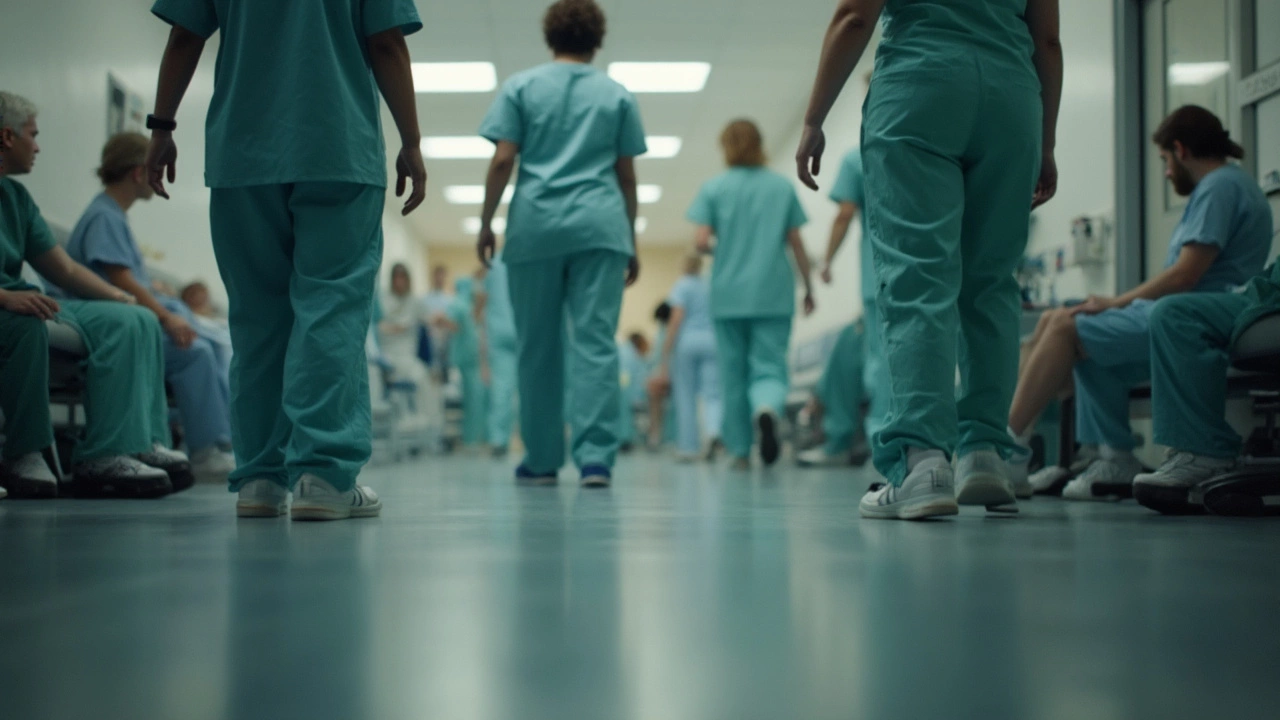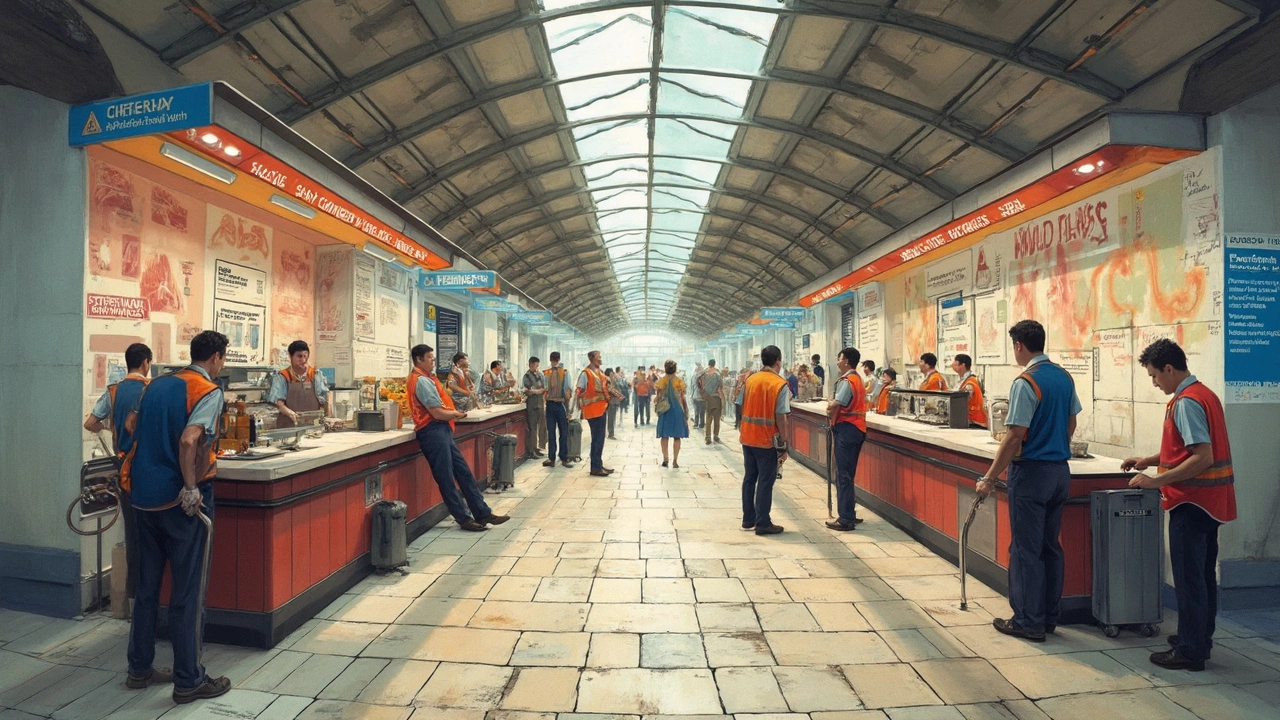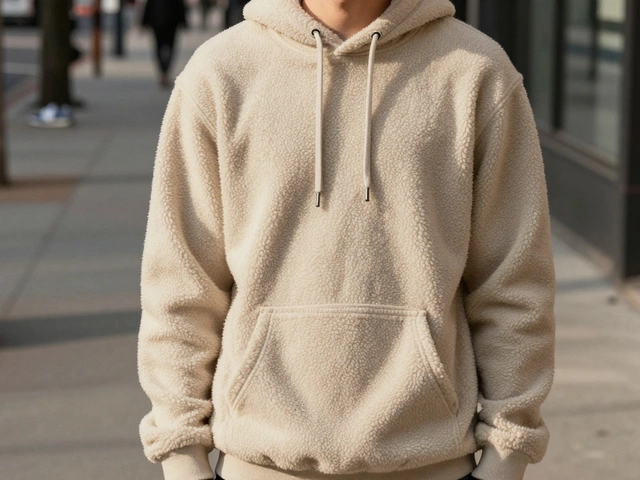Is Being on Your Feet for 12 Hours Bad? Work Shoes, Pain, and Real Solutions

- Cleo Fairchild
- 7 June 2025
- 0 Comments
If you've ever dragged yourself home after a double shift, you know the ache that living on your feet brings. It's not just your feet that feel it—your back, knees, and even your mood can take a hit after standing for 12 hours straight. People who work in hospitals, restaurants, warehouses, or retail, this is your daily reality.
Here's the deal: your body wasn't really built to stand in one spot for endless hours. Sure, it's one thing to walk around and move. But when you’re stuck on a hard floor, it’s a recipe for sore arches, swollen ankles, and that deep leg fatigue that makes sitting down feel like heaven.
If you're thinking, "Is this even safe in the long run?"—you're asking the right question. Bad shoes, stale routines, and zero breaks can actually cause problems way beyond tired feet. We're talking about joint pain, poor circulation, and sometimes even permanent damage if things get out of hand.
But there’s good news, too. Most of what makes standing 12 hours miserable can be fixed—or at least made a lot easier—with a few smart choices. From better shoes to tiny habits that save your legs, there are hacks that really work. If your job keeps you on the go, a few small changes can bring real relief, starting tonight.
- What Really Happens When You Stand for 12 Hours
- The Role of Work Shoes in Surviving Long Shifts
- Tricks for Easing the Pain: From Shoes to Small Habits
- When to Worry: Signs You're Pushing It Too Far
What Really Happens When You Stand for 12 Hours
Spending 12 hours on your feet isn’t just about being tired. Your whole body responds—and not always in good ways. The first thing people usually notice is swelling in the feet and ankles, which is your body’s way of saying it needs a break. Blood pools in your lower limbs, and that swelling can make your feet feel heavy and your shoes extra tight by the end of the shift.
Your muscles—especially in your legs, back, and feet—work nonstop to keep you upright. Ever feel that deep ache in your calves or an annoying throb in your lower back after a long day? That’s because your muscles have been doing tiny corrections all day long. The harder the floor (looking at you, concrete), the worse the pain. And with every extra hour, your joints lose a little more shock absorption, which isn’t great for your knees, hips, or spine.
There’s an even bigger risk, too: circulation problems. Standing for long periods slows blood flow and increases pressure in your veins, which raises the risk of varicose veins and even blood clots if you’re really unlucky. According to a study published in the American Journal of Epidemiology, people who stand all day are about twice as likely to develop heart disease compared to people who mostly sit at work. Crazy, right?
Let’s talk numbers for a second. Here’s what happens during a typical 12-hour shift on your feet:
| Effect | First 4 Hours | Next 4 Hours | Last 4 Hours |
|---|---|---|---|
| Foot swelling | Minor swelling | Noticeable discomfort | Sometimes up to 1–2 shoe sizes bigger |
| Muscle fatigue | Slight | Moderate | Legs may cramp or feel shaky |
| Joint pain | Occasional twinge | Knee/hip discomfort | Pain may linger after shift |
| Mood/alertness | Normal | Drop in focus | Risk of errors/higher stress |
If your on your feet for back-to-back long shifts, these effects don’t always reset overnight. It gets easier for small aches to turn into bigger issues, like plantar fasciitis (the infamous heel pain), bunions, or chronic lower back pain. Plus, you’ll probably notice your energy tanks faster, making it harder to keep up with life outside of work.
The Role of Work Shoes in Surviving Long Shifts
Not all shoes are made for 12-hour marathons on concrete floors. Those cute flats or old sneakers at the back of your closet? They aren’t cutting it if you’re working long shifts. What you wear on your feet makes a huge difference—for your comfort, energy, and even safety.
Researchers at the American Podiatric Medical Association say that "choosing supportive footwear can help prevent foot and lower limb injuries that are common among people in standing jobs." You don’t need to blow your whole paycheck, but you shouldn’t cheap out either—good work shoes are an investment in your own well-being.
So, what matters most? Look for these must-haves in a solid pair of work shoes:
- on your feet cushioning: The thicker the cushion, the less your arches and heels will complain at the end of your shift.
- Arch support: This keeps your whole body aligned and helps avoid knee and back pain.
- Roomy toe box: Cramped toes lead to blisters and those gnarly calluses nobody wants.
- Slip-resistant soles: Surfaces can get slick, and a fall on the job is no joke.
- Breathable fabric: Sweaty feet get sore (and smelly!) way faster.
I learned the hard way early in my nursing days. I was stubborn—wore those old running shoes on my first few night shifts. By sunrise, I could barely walk out to my car. When I finally upgraded to real work shoes, the difference was night and day. Even Julian noticed I stopped complaining as much when I got home. If you’re always dealing with aches and blisters, it’s worth figuring out what’s happening with your shoes. Sometimes, just swapping insoles can be a game-changer.
The bottom line? If you're stuck on your feet for 12 hours, your work shoes are doing more than just finishing your outfit. They’re taking a lot of the pressure—literally—off your joints and keeping you going until the end of your shift. Don’t underestimate what a good pair can do.

Tricks for Easing the Pain: From Shoes to Small Habits
First things first, bad shoes are your enemy. If you’re stuck on your feet all day, the right pair of work shoes will make or break your shift. Look for shoes with real arch support, cushioned soles, and enough room for your toes. If the label says "memory foam," don't get too excited—some brands just put a thin layer on top of a flimsy sole. You need actual structure and support. A solid heel cup helps, too, because it keeps your foot stable.
Replacement matters just as much as style. Most of us keep our work shoes way too long—after about 500 miles or 6-12 months, the cushioning wears out even if the outside looks fine. Try pressing your thumb into the sole or twisting the shoe; if it flexes too much, it’s time for a new pair.
There’s more you can do than just swap shoes, though. Small habits during your shift make a huge difference:
- Shift your weight often: Rock back and forth, or stand on one foot and then the other for a little while. Tiny changes help your muscles and keep your blood moving.
- Take micro-breaks: Just 30 seconds sitting down every hour counts. If you can sneak off to the bathroom or sit down for a sip of water, do it.
- Stretch like you mean it: Calf raises, toe touches, and a good ankle roll can keep everything loose. Some folks even stash a tennis ball under their work desk to roll out sore arches on breaks.
- Compression socks are not just for grandmas: They actually help keep swelling down and improve circulation. Go for tight, but not tourniquet-tight, pairs.
- Mind your posture: Stand tall, shoulders back. Slouching will wreck your back fast.
- Stay hydrated: You’ll be surprised how much water helps with swelling and muscle fatigue if you’re standing for hours on end.
Don’t forget what happens when you finally crash at home. Give your legs a boost (literally) by propping them up for a few minutes on the couch or wall. Sometimes, icing sore spots or a simple foot massage goes a long way. Honestly, Julian jokes that he can hear my bones creak when I forget to do this after a double at the bakery.
Tiny changes add up. Show your feet a little respect during those 12-hour marathons, and you might just leave work without limping.
When to Worry: Signs You're Pushing It Too Far
Most people just push through foot and leg fatigue, but sometimes the warning signs shouldn’t be ignored. Soreness might be normal after a long day, but certain red flags mean you’re doing more harm than good. Trust me, I learned the hard way after helping out at Julian’s holiday pop-up shop—there’s a big difference between being tired and being injured.
If you spot these issues, it's time to back off and make changes:
- Swelling that doesn’t go down overnight. Mild swelling is common, but it should fade with rest. If your shoes feel tighter each day or you see swelling creeping up your calves, pay attention.
- Numbness, tingling, or burning in your toes or feet. This isn’t just tiredness; it might mean nerves are getting pinched or blood flow is getting blocked.
- Pain that doesn’t stop when you sit. If you rest and still feel throbbing, sharp, or stabbing pain, your body’s sending a clear SOS.
- New lumps, hard spots, or blisters that keep coming back. These are warning signs of overuse or bad-fitting shoes.
- Knee, hip, or lower back stiffness by the end of most shifts. Misaligned posture from long standing can set off joint problems fast.
Let’s put some concrete numbers to it, just for perspective. Workers in retail and healthcare who stand for more than 8 hours at a time have double the risk of developing chronic lower back pain compared to those who work mainly sitting down. And according to a 2023 study, 52% of nurses reported moderate to severe foot pain at the end of a 12-hour shift.
| Symptom | What it Might Mean | What to Do |
|---|---|---|
| Swelling | Poor circulation or too much pressure | Elevate legs, wear compression socks |
| Numbness/Burning | Nerve compression | Take breaks, see a doctor if ongoing |
| Pain After Rest | Overuse injury | Ice, rest, consider new footwear |
| Recurring Blisters | Bad shoes/fit | Change shoes, add padding |
Listen to your body—don’t shrug it off if you’re limping after every shift. Simple tweaks like switching to the right work shoes, using gel insoles, and scheduling short breaks can save you from a world of hurt. If these changes don’t help, it’s smart to chat with a healthcare pro before the damage gets serious. Prevention is easier (and less expensive) than recovery.


